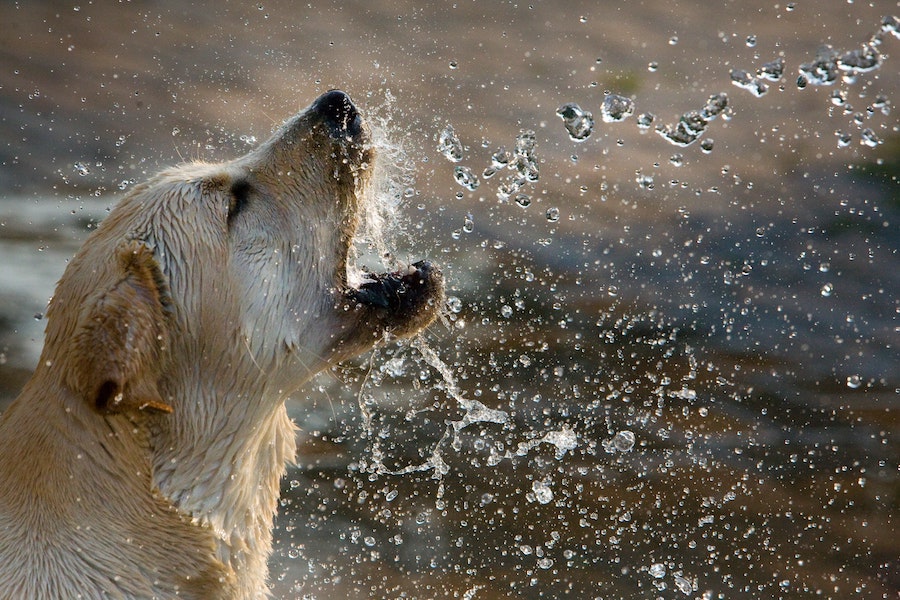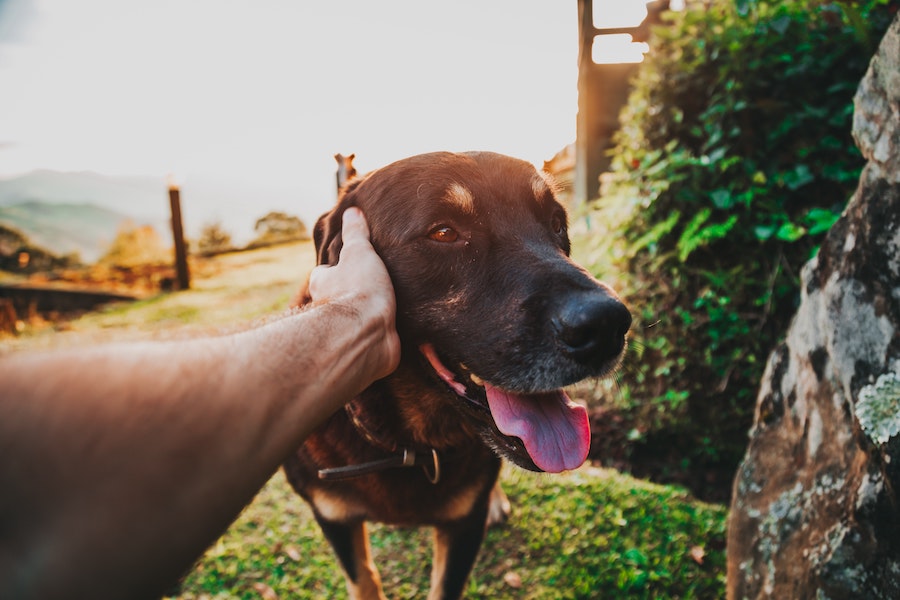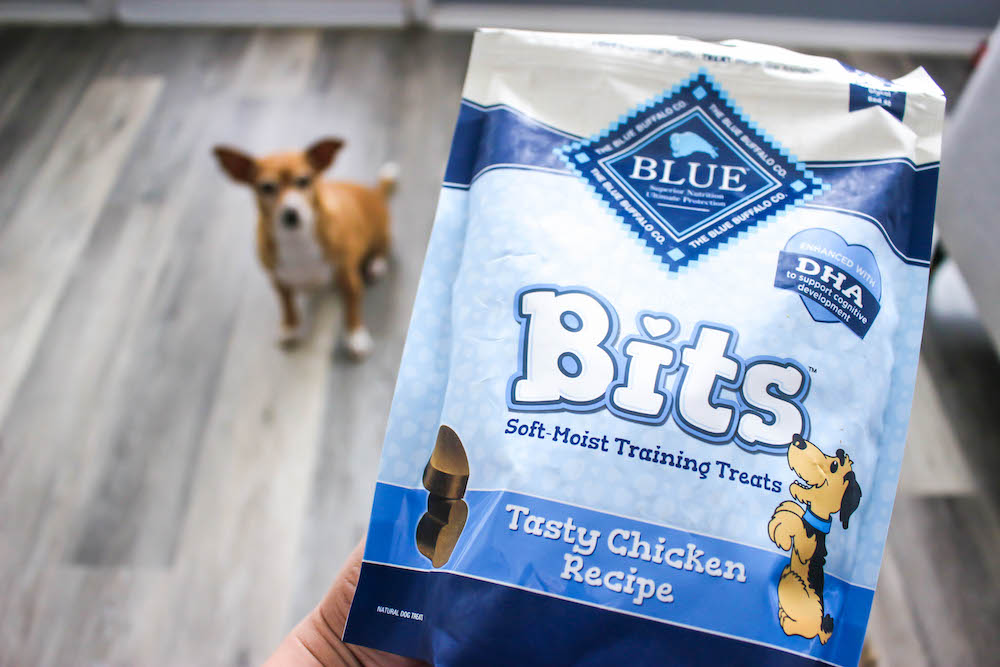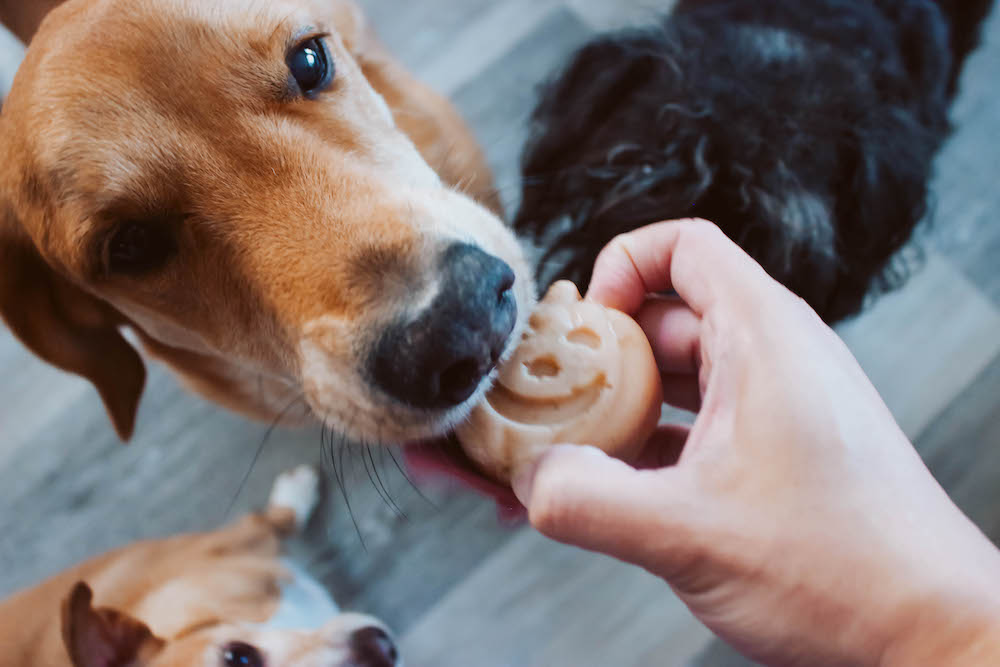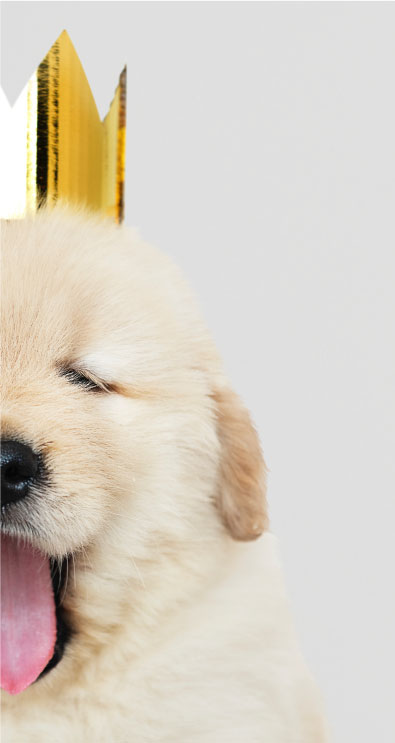
Dehydration in Dogs: Causes, Symptoms & Treatment
With summer in full swing, we tackle dehydration in dogs to help you keep your pooch safe. Learn more about the causes, symptoms, treatment, and prevention of dog dehydration below.
Have you ever seen your dog pant excessively or touched their nose and it was cracked and dry? Your dog may have been dehydrated. Dehydration in dogs can happen quite often, but don’t take it lightly. When a dog is dehydrated, consider it an emergency and act fast.
Your dog loses water all day. They lose the most fluids through peeing and pooping, but they also lose water through their paws and when they pant. It’s the dog’s version of sweating. Even not getting enough water one day can lead to dehydration, and quickly.
What Is Dog Dehydration?
When a dog dehydrates, it means they’ve lost too much water without replenishing it. A dog not drinking water or losing about 10% of the water in his body can have serious consequences, even death. Dogs can go two to three days without water, but definitely don’t try it.
You may start to see dehydration symptoms at 5% water loss. And when temperatures are rising, this can happen quickly. Their blood flow decreases, and their body doesn’t get enough oxygen to the organs. This can lead to organ failure and even death.
Main Causes of Dog Dehydration
The most common causes of dog dehydration are:
- Heat stroke
- Diarrhea
- Vomiting
- Burns
- Large skin injuries
- Ingesting a toxic substance
- Illnesses such as Diabetes Mellitus and Addison’s disease
- Not drinking enough water throughout the day. Even the healthiest dog can become dehydrated quickly if he or she doesn’t get enough water.
Primary Signs of Dehydration in Dogs
How can you tell if your dog is dehydrated? Watch out for these signs of dehydration:
- Gums that are dry, sticky and/or white
- Saliva that looks thick
- Sunken eyes
- Loss of skin elasticity. An easy way to test this is with the Dehydration Test. When you pinch their skin, does it go back to place? If it doesn’t, and it stays pinched, your dog is dehydrated.
7 Symptoms of Dehydration in Dogs
Once a dog is dehydrated, they will begin to exhibit signs pretty quickly. Watch out for some of these dehydration symptoms in dogs, especially during the warmer months:
- Lethargy – If your normally spunky pooch seems a little lazy, sleeps all day or doesn’t seem like themselves, you might want to consider dehydration as the culprit.
- Low or no appetite – When dogs are dehydrated, they don’t feel like doing anything, and that includes eating. Other illnesses can cause loss of appetite too, so be sure to see a vet if this goes on for more than 24 hours.
- Dry mouth – Dehydration causes decreased body fluids, which makes saliva thick and gums dry and white.
- Sunken eyes – Dogs’ eyes sink in when they’re severely dehydrated or emaciated. Loss of body fluids causes the fat pads behind the eyes to lose substance.
- Loss of skin elasticity – Loss of body fluids also causes the skin to dry up. This means their skin won’t be as elastic and will take longer to fall back into place when pinched.
- Excessive Panting – A heat stroke can cause excessive panting in dogs, and rising body temperature in a dog can lead to excessive water evaporation from their body.
- Dry nose – Dogs’ noses are normally wet but can go from wet to dry throughout the day. When a dog has a chronic dry nose or develops scabs or sores on it, this can mean dehydration.
How to Treat Dehydration in Dogs
Severely dehydrated dogs must get immediate veterinary care, especially when they have begun showing signs of shock, like heat stroke and collapsing. Thee vet must rehydrate them with intravenous fluid.
For mild to medium dehydration, you can start slowly by offering a sip of water, ice, and electrolyte replacement solution. Too much water too soon can cause vomiting and make dehydration worse. If your dog is vomiting, try offering the electrolyte solution first.
Even if moderate dehydration is suspected, contact your veterinarian for comprehensive support and instructions on how to rehydrate your dog. They can better help you determine if you need to bring your dog in to be hospitalized.
How to Prevent Dehydration in Dogs
Preventing dehydration is quite simple. Here are some things you can do daily.
- Dogs drink a lot of water, so be sure to offer plenty of fluids like clean, freshwater, and make sure their bowl is always full.
- When out with your dog on walks or at the park, be sure to have water handy for them to drink. Make sure they don’t drink too quickly, by offering a little bit at a time, especially after they’ve done strenuous exercise.
- Keep your dog up to date on vaccines, exercise them regularly, and avoid places or situations where you could expose your dog to illnesses. We can’t always avoid them getting sick, but we can try our best to keep them as healthy as possible.
- Adding wet or canned food to their diet, especially during the warmer months, can help up their water intake. A moister, more balanced diet can keep them hydrated.
10 Best Wet Dog Food Brands to Keep Your Pup Hydrated - This review of 10 of the best wet dog food brands to buy for your pooch features information on the food's ingredients, price range, pros, cons, and more.
How Much Water is Enough?
Pets WebMD suggests your dog should get one ounce of water per pound a day at the very least. So, a 20-pound dog must get a minimum of 20 ounces daily. That’s 2 ½ cups per day. To make things even easier, make sure that the water bowl is full no matter what with fresh, clean water at any time of the day.
Conclusion
People might view dog dehydration as a common occurrence. Where I live, temperatures can easily reach the 100s during the summer months, so keeping our dogs hydrated is a top priority. We’ve even bought them their own water dispenser with bowl included.
If your dog ever does become dehydrated, even mildly, you must take it very seriously, especially when they begin to exhibit signs and symptoms. Prevention is key, but if the unthinkable should occur, contact your veterinarian immediately. Even if dehydration may seem mild, they can help you determine the cause, how severe the dehydration is, and the best course of treatment for your dog.
Every dog is different, so make sure you know yours well. Noticing even the slightest behavior change can make a huge difference.
I am a dog lover, foster, and rescuer. I GREW UP PICKING UP DOGS FROM THE STREETS IN EL PASO, Texas and finding loving homes for them. When I moved to San Antonio, Texas I was shocked at how bad the stray dog population was here and how dogs were not only homeless, but taken to the shelter and euthanized. I became a dog foster mom and quickly adopted my first three dogs: Brobee, Molly and Panini.
Read more »